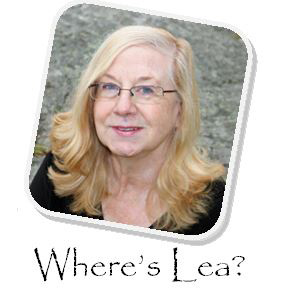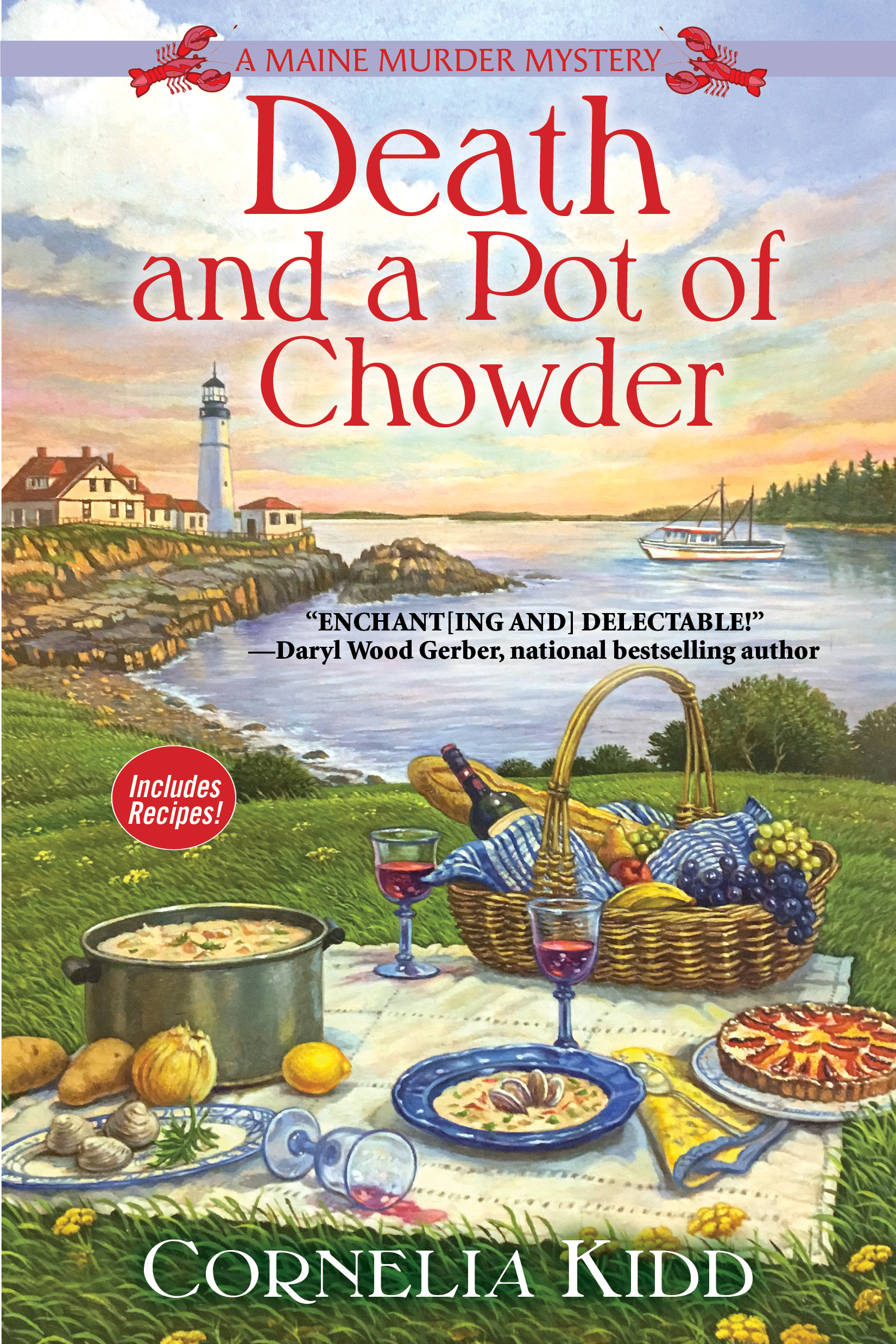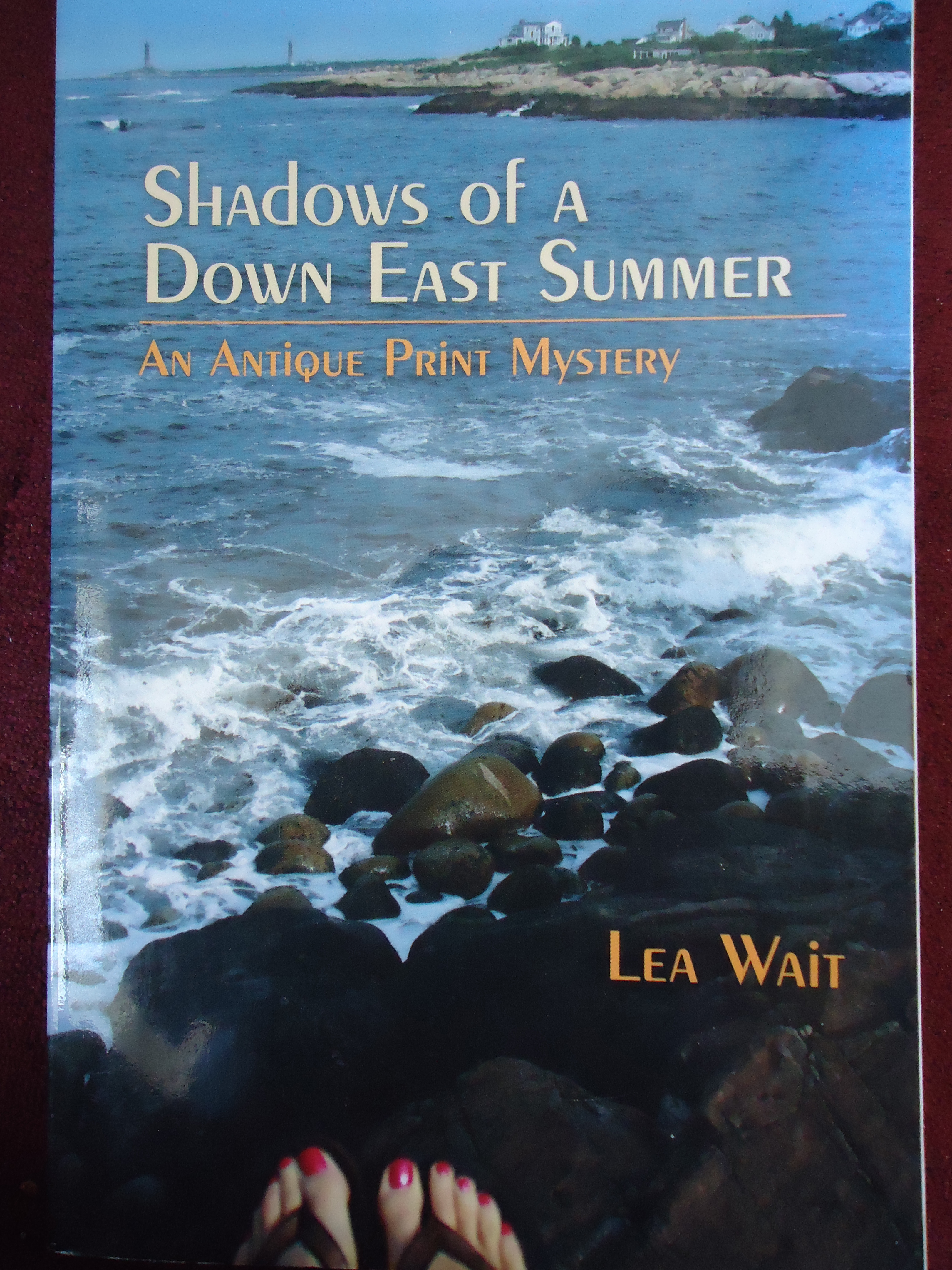 by Lea Wait
by Lea Wait
To begin with, I love history. I was a fourth-generation antiques dealer, love historical novels, and I’ve written five set in nineteenth-century Maine.
Although my most recent books are in one of my three contemporary mystery series, that hasn’t meant I’m not writing about history.
First, I include snippets of historical details in the epigraphs at the beginning of each chapter of my mysteries. In my eight-book Shadows Antique Print series I describe an old (eighteenth to early twentieth-century) print that has some relation to the story: a Christmas print in a Christmas mystery, or a snake at the beginning of a chapter in which someone is lying. My protagonist is herself an antique print dealer, and additional details about artists and prints and other antiques are a part of the plot of each book in the series.
Example:
Home for the Holidays. Wood engraving from January 2,1869, Harper’s Weekly. Illustrator: JW (full name unknown) Black-and-white illustration of wooden suburban railway station (Valley Station), platform filled with elegantly dressed people of all ages greeting each other. Train in distance pulling away from station. 15.5 x 11 inches.
In my Mainely Needlepoint series (the seventh book, Thread Herrings, will be published later this year, available for pre-order now) the chapters begin with short quotations (about needlepoint) from nineteenth-century books and magazines, or words stitched two centuries ago on samplers. When I know biographical information about the girl (or boy) who stitched the sampler, I include that, too. It makes the quotations come alive.
Example:
“Yet shall thy grave with rising flowers be deft
And the green turf lie lightly on thy breath
There shall the morn her careless tears bestow
There the first roses of the year shall blow.”
– Worked by Sally Gorham of New Haven, Connecticut, October 20, 1798. She was seventeen. Two years later, in December of 1800, she married Enoch Ives.
The protagonist for that series doesn’t actually do needlepoint herself (although she’s learning.) Instead, she runs a business that does original needlepoint for gift shops and decorators, and also identifies and restores antique needlepoint. Bits and pieces of information about antique needlepoint and tools are included in the books, and sometimes have a direct relation to the mystery.
 In my newest series, a culinary mystery series, (Death and a Pot of Chowder, the first book, will be published June 12 under the pseudonym Cornelia Kidd, available now for pre-order) I include old recipes and hints on running a household because one of the protagonists, a graduate of the Culinary Institute, finds old books about cooking fascinating. When Kindred Spirits, the café she and her sister will run, opens, she’ll include one Korean recipe each night to honor her heritage, one Quebecois recipe in honor of her sister’s grandmother and the many Mainers who came from Quebec, and one classic historical Maine recipe. And, yes, each book in the series will include recipes.
In my newest series, a culinary mystery series, (Death and a Pot of Chowder, the first book, will be published June 12 under the pseudonym Cornelia Kidd, available now for pre-order) I include old recipes and hints on running a household because one of the protagonists, a graduate of the Culinary Institute, finds old books about cooking fascinating. When Kindred Spirits, the café she and her sister will run, opens, she’ll include one Korean recipe each night to honor her heritage, one Quebecois recipe in honor of her sister’s grandmother and the many Mainers who came from Quebec, and one classic historical Maine recipe. And, yes, each book in the series will include recipes.
Example:
“Oyster Over-Eating: When too many oysters have been eaten, and they lie cold and heavy upon the stomach, drink a half-pint of hot milk and it will dissolve the oysters into a cream jelly that can be quickly digested.”
—Old Doctor Carlin’s Recipes: A Complete Collection of Recipes on Every Known Subject by Doctor William Carlin, 1881
 In addition to the epigraphs, in each of my mystery series I’ve incorporated bits of history into the plots themselves. Shadows of a Down East Summer includes the diary of a young woman who, with a friend, posed for Winslow Homer on the coast of Maine in 1890. There were such women, but in historical notes at the end of the book I apologize to them for taking on their identities. All the details about Homer are correct, but other details about that summer are fictional. Now someone has found that long-lost diary, and the information it contains will shatter myths the descendants of one of the girls have believed for years: a motivation for murder.
In addition to the epigraphs, in each of my mystery series I’ve incorporated bits of history into the plots themselves. Shadows of a Down East Summer includes the diary of a young woman who, with a friend, posed for Winslow Homer on the coast of Maine in 1890. There were such women, but in historical notes at the end of the book I apologize to them for taking on their identities. All the details about Homer are correct, but other details about that summer are fictional. Now someone has found that long-lost diary, and the information it contains will shatter myths the descendants of one of the girls have believed for years: a motivation for murder.
In another Shadows Antique Print Mystery, Shadows on a Maine Christmas, I write about a tight-knit group of women who grew up together and shared each other’s secrets and challenges and celebrations for 85 years. Now one of them has Alzheimer’s and is talking about history the others have always vowed to keep secret. Her memories include working at a factory that produced destroyers in World War II…and establishing a sub-rosa abortion clinic before abortion was legal. Historical details, plus more. Perhaps cause for blackmail, or murder?
In Thread and Gone, a Mainely Needlepoint Mystery, a piece of embroidery is found that might have been stitched by Mary, Queen of Scots, and has connections to Queen Marie Antoinette, both avid needlepointers. A bit of medieval and eighteenth-century history and their connection to Maine are important plot elements.
And Tightening the Threads is the story of how Australian antique dealer Sarah Byrne, now a part of the Maine community of Haven Harbor, ended up in the United States. Her story includes information about a United Kingdom policy from 1838 until 1970, which removed foster children to different parts of the Commonwealth, telling their parents that the children had died.
Whenever history is a key part of my plot I try to limit the space it takes in the contemporary story. Although many of my readers enjoy learning little bits about the past, others not familiar with some periods of history can get confused. I found this especially true with the book that includes Mary, Queen of Scots and Marie Antoinette. Their history and connections were more complicated than some readers want to figure out. On the other hand, some readers have confessed they buy my books at least in part because of the snippets of information I include in the epigraphs, the information about antiques that is in every book, and the characters who are interested in the past as well as the present.
USA Today best-selling author Lea Wait is the author of 22 books, so far, with two more to debut in 2018. When she was single she was an adoption advocate and adopted four daughters. Now she writes mysteries and historical novels about people searching for love, acceptance, and a place to call home. She loves living on the coast of Maine, speaking and writing about books, and drinking champagne while watching the sun set over the river.
